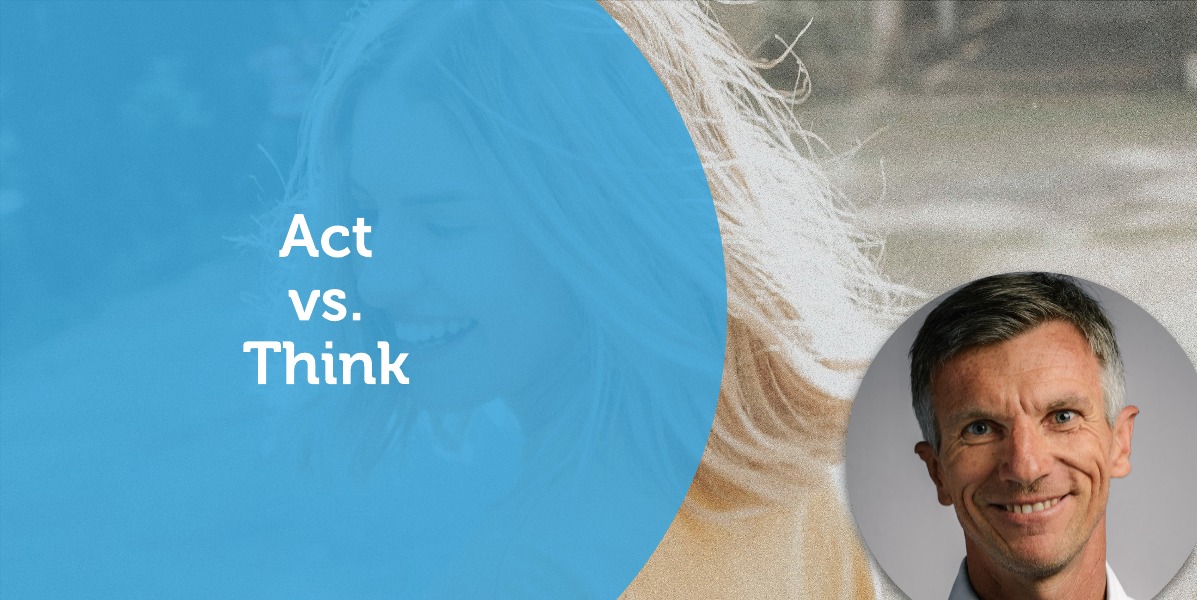 A Coaching Power Tool Created by Dinko Barbalic
A Coaching Power Tool Created by Dinko Barbalic
(Transformational Coach, UNITED STATES)
We are what we constantly do. Excellence, therefore, is not an act but a habit. Aristotle
The ACT is the process of doing something.
DOING is the act of performing or executing something; the acts of making something happen through your own action.
It happens so many times that an idea comes to our mind, we get excited and we really want to take action and start a project but…’ something’ happens and we don’t follow through. We then decide that it wasn’t worth our time and energy because, after all, it wasn’t even a good idea or circumstances were adverse etc. Next time, the same thing happens and we do the same. Or better to say, we don’t do anything. Nothing changes, our to-do lists become longer and we keep disregarding them as too unfeasible or unrealistic.
There could be so many reasons why we don’t take action as some sort of fear, lack of clarity, self-doubt, lack of self-esteem, confidence, self-love etc., but one thing is sure, if we don’t act, we don’t accomplish anything and we don’t move forward. This way we don’t seize many opportunities life may serve us and we waste a lot of good resources. Thinking about doing requires more energy than doing itself.
We have two complementary motivational systems: the ‘thinking’ system and the ‘doing’ system. We’re generally only capable of using one at a time. If we tend to focus more on our thinking system instead of doing, we might be caught up in a life of inaction. What we want is progress in life and career and that can only manifest throughout the action. Being a doer instead of a thinker requires a fair amount of energy and self-discipline. Sometimes doing requires a risk, which may be one of the main factors of inaction. It is the change of the status quo that scares so many people; the change per se is getting in people’s way. We all know that doing, even if it involves a risk of some kind, is the only way to make progress. If we never dare to do what makes us feel uncomfortable, we will never pass the thinking phase of getting things done.
Most of us know that results come to those who act while others are discovering the “right” ways to generate results. It is what we do that defines us not what we think we should or want to be doing. Nevertheless, there can be internal resistance, a brake that makes us keep thinking and re-thinking to find the “perfect” solution. How do we know that that idea wasn’t the perfect one if we never tried? What lays behind that idleness and perpetual thinking and how can we overcome it?
Fears, judgments and limiting beliefs (that fuel fears) are among the main culprit why we don’t act. They are often present in our minds. We have to be mindful when they appear and let them go. Many times they are not visible and obvious but they trigger the negative‘(over)thinking game’. We start seeing all the negative scenarios of why our ideas won’t work. We delay any action and we start procrastinating, the disappointment grows and so does fear until it conquers all the positive space in our minds. How can we get out of this negative pattern?
I believe that only a strong motivation, a burning desire, can help a person move forward. Sometimes the deep states of confusion can literally paralyze the person and this is where a coach can have a key role to unlock them.
Coaching application
The first step the coach can do to help his client move into action is to assess their reality. This will create an awareness of what is going on in their world. Once the client has gained new clarity, the coach can go deeper and invite him to explore what the triggers are that cause the inertia. This is the moment when the client has the opportunity to move forward and start transforming his goals (internal, still in his mind) into feasible plans and then tangible actions (external, in the execution). In that moment doors of possibilities open up wide. Key to that is the commitment to make things happen. Without that, it is unlikely that anything major will move.
But this is still a stage when the client has it all in his mind and what becomes crucial is when he will transform it into deeds. As his accountability partner, the coach has an incredible power to help him follow through.
Possible questions to ask:
By asking action-oriented questions the coach creates a shift in perspective for the client. The energy flows into doing rather than analyzing. Many times, one small step after another create a big movement. The biggest energy is required in that first phase. Sometimes what is missing is an inspiring goal or a path forward that motivates the client. By helping to create an exciting future the coach already helps the client move forward. Daily practice is essential in making sure that this becomes a new habit.
Conclusion
Thinking without action is aimless rambling. Action breeds action. It has the power to create momentum and motivate us to go forward.
Inaction breeds doubt and fear. Action breeds confidence and courage. If you want to conquer fear, do not sit home and think about it. Go out and get busy. D.Carnegie